Honoring a 20th Century Renaissance Man: Dino Buzzati
“Each one of us has a favorite Buzzati: the author of The Tartar Steppe, the artist and illustrator or the journalist of Il Corriere della Sera.” With these words Stefano Albertini, Director of NYU's Casa Italiana Zerilli Marimò introduced an exciting evening of literature, theater and cinema to mark the 40th anniversary of the death of Dino Buzzati, a real Renaissance Man from the 20th century.
The evening was designed by Kairos Italy Theater, Casa Italiana's theater company in residence, a leading group in the making of bilingual theater in New York City. Its founder and creative director, Laura Caparrotti, used Albertini's words to further explain the Renaissance man concept, explaining that Buzzati was a writer whose work was mandatory in high school so kids read his work unwillingly without really appreciating it. Those same kids discovered him later in life when no one was forcing them to read his stuff. “He also wrote opera and plays, he designed costumes and sets. He played music since childhood. He had broad intellectual interests and was accomplished in many areas of the arts,” she explained. “KIT has undergone this mission to bring his work to all those who are not familiar with it and even those who already love him but cannot really find much about him around.”
If you google his name “Dino Buzzati” the title of the second article that appears is “Forgotten authors No 20: Dino Buzzati.” The article starts “It is surprising how many forgotten authors have managed to survive in their short fiction rather than their novels, even though their full-length works received critical adulation upon publication. Dino Buzzati (1906-1972) is obscure even by bibliophiles' standards, but it's important to include him here because he was an extraordinary writer. A painter, poet, playwright, editor and journalist, he found fame with the 1940 publication of The Tartar Steppe, a disturbing novel reminiscent of Kafka and Camus, about a young soldier in a far outpost awaiting inundation by barbarians.”
A screening of the film The Desert of the Tartars (Il deserto dei tartari, 1976, 141', in Italian w/ English subtitles) based on the novel followed a reading fromPoem Strip (Poema a Fumetti. 1969), Buzzati's graphic novel, by Tom O'Keefe. The reading was introduced by Marina Harss, the English edition translator, who candidly declared that she struggled with the objectification of women in the book and with the challenge of maintaining the tone of the poem. Harss added that she is not fully satisfied with the final product, and indeed critics have written that the text might have lost some of its lyricism in the translation from the Italian, as it occasionally seems stiff (Amazon). Poem Strip is a modern, graphic version of the story of Orpheus and Eurydice, a dark and alluring investigation into mysteries of love, lust, sex and death.
The film directed by Valerio Zurlini features an amazing cast with the likes of Vittorio Gassman, Giuliano Gemma, Max Von Sydow and Jacques Perrin.
The Desert of the Tartars is the story of a young man named Giovanni Drogo. He’s a newly commissioned lieutenant who is sent to the remote outpost, Fort Bastiani located on the Tartar Steppe. Drogo has looked forward to this day for years, and he naively imagines that his military life is going to be the beginning of something worthwhile. At the fort all military men cling to the rigid values of a crumbling order as they await an enemy that may not even exist. At the fort time passes imperceptibly, as Drogo “ages and weakens as the desert and the constraints of life in the fort strips away his physical strength and inner resolve.”
Those who hope to find a spectacular epic movie filled with action will be disappointed as the film is more psychological and subtle.
“There a few differences between the film and the novel,” lecturer Luca Delbello from St. John's University said during his introduction to the screening. “Buzzati had kept the time and place of the story as vague as possible, because it universalizes the story. Drogo's condition and life events can be those of anybody in any place at any time. The film, actually takes place at the borders of the Austro-Hungarian Empire and the characters are wearing costumes that are typical of the 19th century. In addition, the film omits certain parts of the novel, especially those relating to the lives of Drogo's friends in his home town.”
KIT is continuing its Buzzati program with No Escape, 4 Monologues by Dino Buzzati at the Cherry Lane Theater (please refer to the web site for a schedule of the performances. Times have changed due to Hurricane Sandy).
These monologues were written in the late ‘50s and tell the stories of four women “trapped into their lives like passionate and proud victims of a fate they can’t control. Solitude, magic, absurd, wait and death are the dominant themes of these ironic and at the same time dramatic monologues presented in the English translation, followed by their original, evocative Italian (translated by Natasha Lardera).”
Spogliarello (Striptease) tells the story of Velia, a woman who is looking for financial stability through a relationship with a married man. After his death, things get pretty tough but even in front of death Velia doesn’t loose her biting wit.
L’orologio (The Clock) tells the story of Irma, a widow who lives a life in a constant and absurd shift between past and present. An enormous clock in her house, hides the soul of her late husband who endlessly tortures her.
Sola in casa (Alone at home) is the story of Iris, a fortune-teller who's afraid to be at home alone because of some killings in her neighborhood. One night she is visited by a man who wants his fortune told and the cards reveal something very disturbing.
La Telefonista (The Operator) focuses on the unhappy love life of a woman who works as a switchboard operator.
The project is supported by Casa Italiana Zerilli-Marimò at NYU, The Consulate General of Italy, the Italian Cultural Institute in NY, The Fondazione Buzzati and the Fondazione Corriere della Sera.






























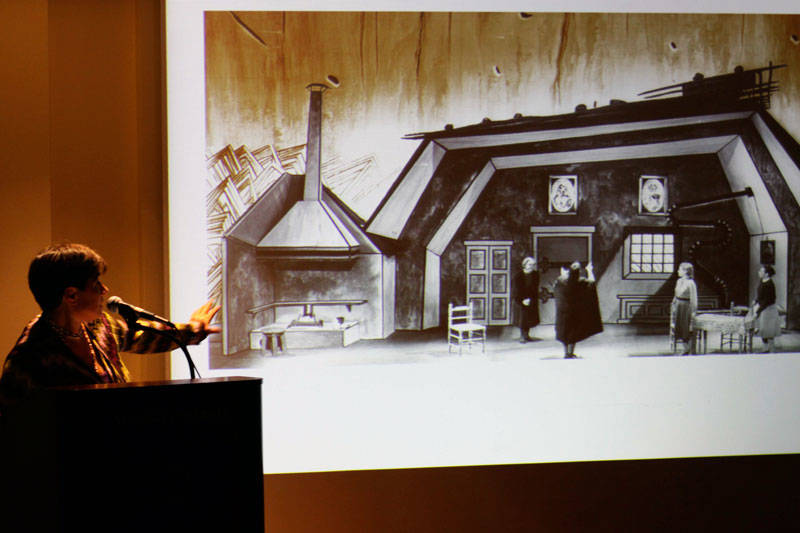
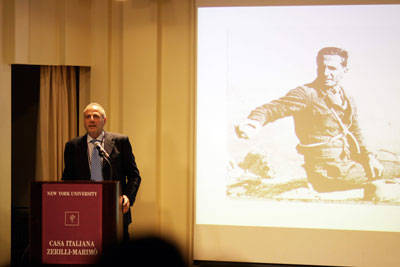
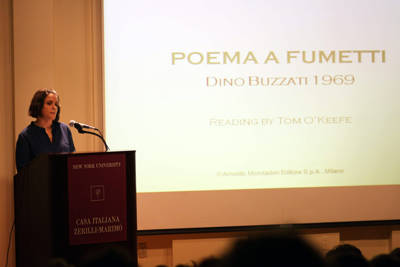
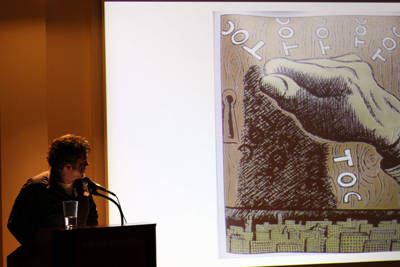
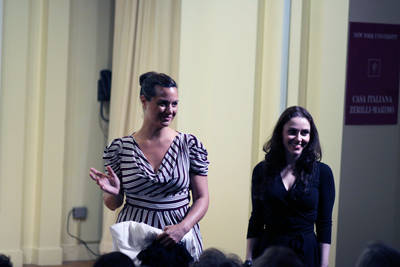




i-Italy
Facebook
Google+
This work may not be reproduced, in whole or in part, without prior written permission.
Questo lavoro non può essere riprodotto, in tutto o in parte, senza permesso scritto.